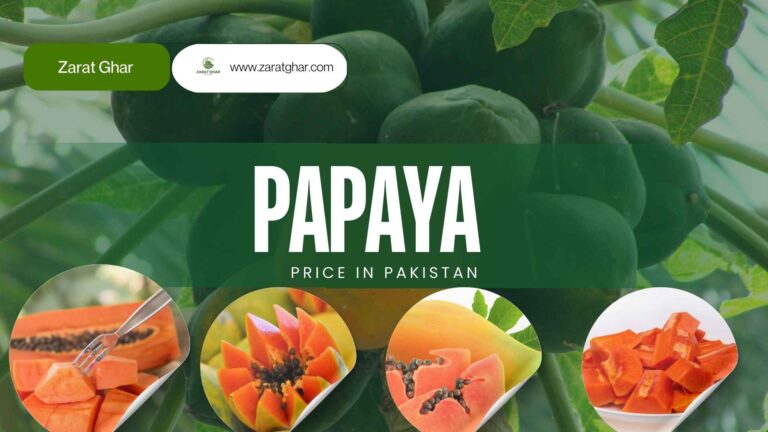Coconut Price in Pakistan | December 2025
In 2025 the Coconut Price in Pakistan is predicted is between 150 to 250 for a coconut.
fluctuate based on the area and how good the coconut is and the market conditions. At present the price for a medium-sized coconut in the major cities such as Karachi, Lahore, and Islamabad.
Prices can fluctuate according to the time of year. In the off-season, which typically runs from November through February, prices can increase due to a lower availability. However, during the season of peak demand (March through October) prices tend to be less, due to an increased yield of coconuts.

Coconut is a multi-faceted and highly prized fruit that has become an essential element of daily life for a large number of Pakistanis. In cooking as a skincare product, cooking, or even traditional medicinal uses coconuts are a significant agricultural product. As we move into 2025 it’s crucial to look at the trends in coconut prices in Pakistan and study the time of its growth to better know the market dynamics for this item. The article below we’ll examine the main factors that affect the price of coconut, the growth season and the outlook for the market for the next year.
Coconut Rate in Major Cities of Pakistan
Prices for coconuts vary between cities due to factors such as transport cost, demand locally and supply. The table below illustrating the estimated prices of coconuts in the important cities in Pakistan for 2025:
| City | Price per Coconut (PKR) |
|---|---|
| Karachi | 150 – 220 |
| Lahore | 180 – 250 |
| Islamabad | 160 – 240 |
| Peshawar | 140 – 210 |
| Multan | 160 – 230 |
| Quetta | 170 – 240 |
These prices can fluctuate depending on factors like market demand, seasonal availability, and the presence of local suppliers.
Factors Affecting Coconut Prices in Pakistan
Many factors influence the price of coconut in Pakistan Understanding these factors can help consumers and companies anticipate price fluctuations. Here are some most important aspects:
Climate and Weather Conditions
Coconuts thrive in humid and hot climates, and are plentiful in the coastal regions of Pakistan. However extreme weather conditions like rains that are excessive, droughts or floods could adversely impact the coconut harvest. For example, if you have dry weather which is followed by heavy rains the coconuts might not develop in a timely manner, resulting in an increase in the supply of coconuts and an increase in costs.
Demand for Coconut Products
Coconut is not just consumed as a fruit but it is also used as a raw ingredient in a variety of products like coconut milk, coconut oil water or desiccated coconut. With the increasing health-conscious population in Pakistan consumption of coconut products are rising. As more people switch to plants-based diets and search for organic products for hair and skin care the increasing demand for coconut-based products which affects the price of coconuts that are fresh.
Imports and Exports
Pakistan is importing coconuts imported from other countries such as Sri Lanka and the Philippines to satisfy the demand in the country. The prices for coconuts imported along with logistical and shipping expenses, affect prices in the market. The same goes for export demand, which may increase the cost of coconuts, particularly if other countries want Pakistani coconuts due to their superior quality.
Government Policies
The Pakistani government may implement policies that affect the agriculture sector, which includes tariffs, subsidies, and trade restrictions. Any changes in agricultural policies could affect the cost of coconuts as these policies directly affect the costs of agriculture, transportation, and exports/imports.

The Season of Growing Coconuts in Pakistan
Coconuts are mostly grown in coastal regions of Pakistan particularly in areas such as Sindh, Balochistan, and areas of Punjab. The season for coconuts to grow in Pakistan is heavily affected by the tropical climate and monsoon season. Let’s look at the season of growth:
Ideal Climate for Coconut Farming
Coconut trees need consistent high temperatures and regular rainfall to flourish. The ideal temperature to grow coconuts is 27°C and 30°C and humidity levels of more than 60 percent. The coastal areas of Pakistan particularly near the Arabian Sea, provide the ideal conditions for the cultivation of coconuts because of their humid and warm climate.
Planting and Harvesting Seasons
Coconut trees usually begin to bear fruits after six to eight years of plantation and may continue to produce coconuts for as long as 60 years. The season of fruiting for coconuts in Pakistan generally begins around march and continues until Oct.. The coconut trees yield a huge quantity of coconuts, and prices tend to decrease or stabilize due to the increase in quantity.
The off-season between November through February is characterized by a decrease in yields, which could result in more expensive prices due to decreased quantity.
Farming Challenges
While the cultivation of coconuts can be very profitable, it’s but not without risks. Farmers in Pakistan have to contend with problems such as pest infestations, a lack of access to high-quality fertilizers as well as soil erosion. In addition, the rising global temperatures as well as unpredictable weather patterns could threaten the sustainability of coconut farming in the near future.
Conclusion: Coconut Prices and Future Outlook
In the end, the cost of coconuts within Pakistan in 2025 is predicted to be fluctuating due to factors like climate change, demand for coconut products and the recurring supply chain issues. Since the market for both plant-based and natural products continues to increase and there is a demand for coconut is likely to grow, putting pressure on the local as well as international market.
Farmers must be aware of the challenges that come with cultivating coconuts, especially due to the fluctuating climate patterns and increasing environmental issues. If they have the right policies and a steady supply chain, the prices of coconut can stabilize, which benefits both the producers and consumers in the long run.
See Also;






